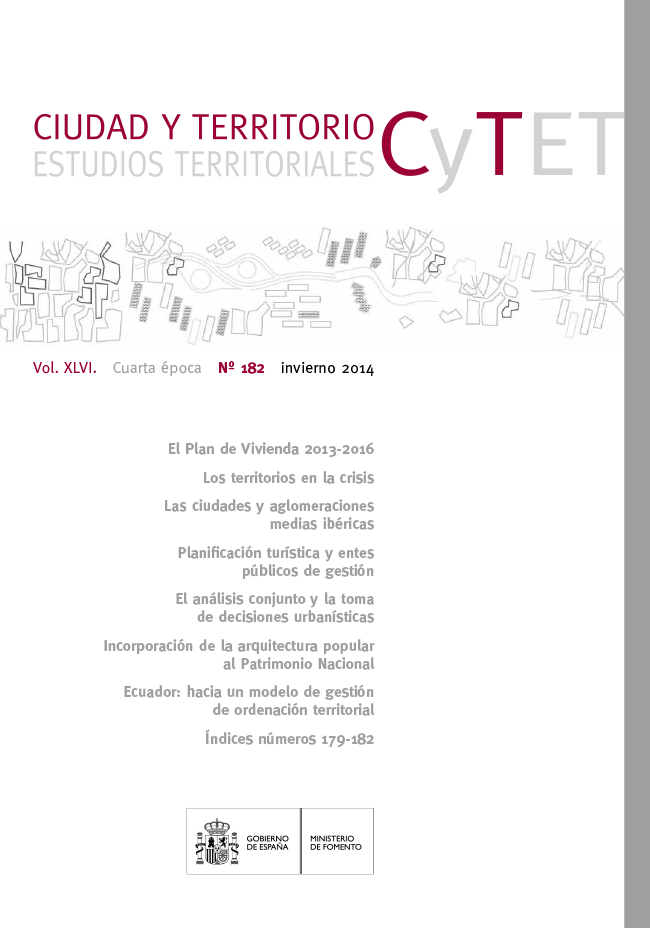Joint analysis as a decision-making support tool for urban planning: Two case studies in Catalonia
Keywords:
Decisioin making, urban planning, urban planning tools, citizen's participation, CataloniaAbstract
The inclusion of the views of the general public in urban-planning process is not only
undeniable; it is necessary in the legitimisation and appropriation of the future city. This paper reports
the results of two research projects run to assess the extent to which Joint analysis, a technique
associated with the design of goods and services with the participation of their future users, can be
used as a decision-making support tool in urban planning. With this in view, this method has been
used to assess the attributes of two potential urban intervention projects in Catalonia, one related to
the recovery of the Pirelli plant in Manresa, and the other to creating a retail corridor in Barcelona. The
results suggest that although this method facilitates the determination of the relative relevance of
each of the attributes of the projects assessed, it remains unclear whether this is enough to (a)
determine the attributes to be assessed, (b) determine the underlying reasons behind the preferences,
and (c) avoid overtaking future needs that fall outside people’s everyday perception. It is therefore a
technique that is far more efficient than that of the typical questionnaires to assess separate attributes
or referenda on preconceived projects, although it is insufficient in the context of projects that are
intrinsically complex, such as urban-development projects.
Downloads
Downloads
Published
How to Cite
Issue
Section
License
Copyright (c) 2014 Carlos Marmolejo Duarte, Manuel Ruiz Lineros

This work is licensed under a Creative Commons Attribution-NonCommercial-NoDerivatives 4.0 International License.
Considering the provisions of the current legislation on Intellectual Property, and in accordance with them, all authors publishing in CyTET give -in a non-exclusive way and without time limit- to the Ministry of Transport, Mobility and Urban Agenda the rights to disseminate, reproduce, communicate and distribute in any current or future format, on paper or electronic, the original or derived version of their work under a Creative Commons Attribution-NonCommercial-NoDerivative 4.0 license International (CC BY-NC-ND 4.0), as well as to include or assign to third parties the inclusion of its content in national and international indexes, repositories and databases, with reference and recognition in any case of its authorship.
In addition, when sending the work, the author(s) declares that it is an original work in which the sources that have been used are recognized, committing to respect the scientific evidence, to no longer modify the original data and to verify or refute its hypothesis. Author(s) also declare that the essential content of the work has not been previously published nor will it be published in any other publication while it is under evaluation by CyTET; and that it has not been simultaneously sent to another journal.
Authors must sign a Transfer of Rights Form, which will be sent to them from the CyTET Secretariat once the article is accepted for publication.
With the aim of promoting the dissemination of knowledge, CyTET joins the Open Journal Access (OA) movement and delivers all of its content to various national and international indexes, repositories and databases under this protocol; therefore, the submission of a work to be published in the journal presupposes the explicit acceptance by the author of this distribution method.
Authors are encouraged to reproduce and host their work published in CyTET in institutional repositories, web pages, etc. with the intention of contributing to the improvement of the transfer of knowledge and the citation of said works.








 Enlace a CyTET en Linkedin
Enlace a CyTET en Linkedin